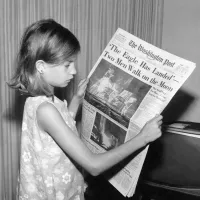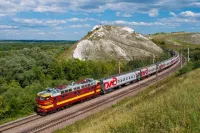Auburn is the largest city in eastern Alabama, located in Lee County. The 2020 census recorded a population of 76,143 residents. It is a principal city within the Auburn-Opelika Metropolitan Area, which had a population of 193,773 in 2020. Auburn is also part of the larger Columbus-Auburn-Opelika, GA-AL CSA, with a total population of 563,967 as of 2020.
20 hours ago : Alabama triumphs over Auburn in a stunning 4-3 tennis victory on the road.
Alabama rallied to defeat Auburn 4-3 in a thrilling tennis match. The comeback victory occurred on the road and was a heartbreaker for Auburn.
1910: Auburn Population Returns to Antebellum Level
By 1910, Auburn's population had returned to its antebellum level, supported by the college's growth and success of its football team.
1930: Auburn Beat Census
In 1930, Auburn Beat showed a Black majority when racial demographics were reported on the U.S. Census.
1940: Auburn Beat Census
In 1940, Auburn Beat showed a Black majority when racial demographics were reported on the U.S. Census.
1957: Interstate 85 Construction Begins
In 1957, construction of Interstate 85 began, connecting Auburn to major cities in Alabama.
1960: Auburn University Renamed
In 1960, Auburn college was renamed Auburn University.
1960: Precinct changed to Census Division
In 1960, the precinct was changed to "census division" as part of a general reorganization of counties.
1971: Passenger Train Service Discontinued in Opelika
Until 1971, neighboring Opelika saw daily passenger train service on the City of Miami.
1973: Auburn Mall Opened as Village Mall
In 1973, the Auburn Mall opened as "Village Mall".
July 15, 1980: Record High Temperature
On July 15, 1980, Auburn reached a record high temperature of 103 °F (39 °C).
August 10, 1980: Record High Temperature
On August 10, 1980, Auburn reached a record high temperature of 103 °F (39 °C).
1980: Population and Economic Growth
Between 1980 and 2003, Auburn's population grew by 65%, and the economy expanded by 220%.
1980: Jan Dempsey Elected Mayor
In 1980, Jan Dempsey was elected mayor, leading to the removal of the previous city government system in favor of a council-manager system.
1980: Auburn-Opelika Census Division Consolidated
In 1980, the census divisions of Auburn and Opelika, along with parts of Loachapoka-Roxana, Opelika Rural-Pepperell were consolidated into the new division of Auburn-Opelika.
January 21, 1985: Record Low Temperature
On January 21, 1985, Auburn reached a record low temperature of −7 °F (−22 °C).
1990: Fastest-Growing Metro Area
Since 1990, Auburn has been Alabama's fastest-growing metropolitan area and the 19th-fastest-growing metro area in the United States.
1995: Hurricane Opal Affects Auburn
In 1995, Hurricane Opal affected the Auburn area, bringing torrential rains and high winds.
1996: Auburn Links Opens
Auburn Links was rated as one of the top three new courses in the nation when it opened in 1996.
2000: Area of Auburn
According to the United States Census Bureau, the city has a total area of 39.6 square miles in 2000.
2000: Population Growth Acceleration
From 2000 to 2020, Auburn's population grew over 77%.
2003: Population and Economic Growth
Between 1980 and 2003, Auburn's population grew by 65%, and the economy expanded by 220%.
2003: Plainsman Park Ranked Top Collegiate Ballpark
In 2003, Baseball America named Plainsman Park the top collegiate ballpark in the nation.
2004: Hurricane Ivan Affects Auburn
In 2004, Hurricane Ivan affected the Auburn area, bringing torrential rains and high winds.
2005: Auburn Metro Area Ranked Number 1 for Golf
In 2005, the Auburn Metro Area was ranked number 1 in the United States for golf by Golf Digest.
2006: Auburn High School Ranked Top Non-Magnet Public High School
In 2006, Newsweek ranked Auburn High School as the top non-magnet public high school in Alabama.
September 2008: Auburn Research Park Opened
In September 2008, the 156-acre (0.63 km) Auburn Research Park opened, anchored by a firm specializing in high-resolution, dark field optical microscopy.
2009: Top Ten Best Places to Live
In 2009, U.S. News ranked Auburn among its top ten list of best places to live in the United States.
2009: Wrights Mill Road Elementary recognized
Wrights Mill Road Elementary School was recognized as a national Blue Ribbon school in 2009.
2010: Census Data
As of the census of 2010, Auburn had a population of 53,380 people, 22,111 households, and 9,939 families residing in the city.
2017: New Auburn High School Opened
In 2017, a new 350,000 square-foot Auburn High School facility opened, housing students in 10th through 12th grade.
2018: Ron Anders Elected Mayor
Ron Anders was elected mayor of Auburn in 2018.
2020: Census Data
As of the 2020 census, Auburn had a population of 76,143 people, 26,156 households, and 13,269 families.
2020: Population Growth Acceleration
From 2000 to 2020, Auburn's population grew over 77%.
2020: Auburn Population at 76,143
In 2020, the census recorded Auburn's population at 76,143, making it the largest city in eastern Alabama and a principal city of the Auburn-Opelika Metropolitan Area.
2021: Student Population at Auburn High School
As of the 2021–22 school year, the student population at Auburn High is the most of any high school in the state of Alabama.
2021: Auburn University Enrollment
Auburn University had an enrollment of 31,526 as of 2021–2022.
2022: Auburn University Enrollment
Auburn University had an enrollment of 31,526 as of 2021–2022.
2022: Ron Anders Re-elected Mayor
Ron Anders was re-elected mayor of Auburn in 2022.
Mentioned in this timeline

Football is a family of team sports centered around kicking...

Miami is a major coastal city located in South Florida...
Alabama is a state in the Southeastern United States bordered...

News encompasses current events disseminated through various media including oral...

Trains are a connected series of vehicles traveling on railway...

September is the ninth month of the year in the...
Trending

35 minutes ago Blake Snell placed on 15-day injured list due to shoulder inflammation.

35 minutes ago Brian Harman Leads 2025 Valero Texas Open Amid Windy Conditions: Saturday Coverage

36 minutes ago Julien Alfred triumphs over Shericka Jackson in Miramar Invitational 300m; fans react.

36 minutes ago LaMelo Ball's Career-High and Bridges' Insight: Team Success in Charlotte Hornets' Battle

36 minutes ago Yankees seek series win after Fried's victory over Pirates, continuing homer barrage.

37 minutes ago Red Sox-Cardinals Game Postponed; Doubleheader Scheduled Due to Rain on Sunday.
Popular

Bruce Pearl is an American college basketball coach currently head...

LeBron James nicknamed King James is a highly decorated American...
The Nintendo Switch is a video game console developed by...
Facebook is a social media and networking service created in...

Michael Jordan also known as MJ is a celebrated American...

Cristiano Ronaldo nicknamed CR is a Portuguese professional footballer widely...